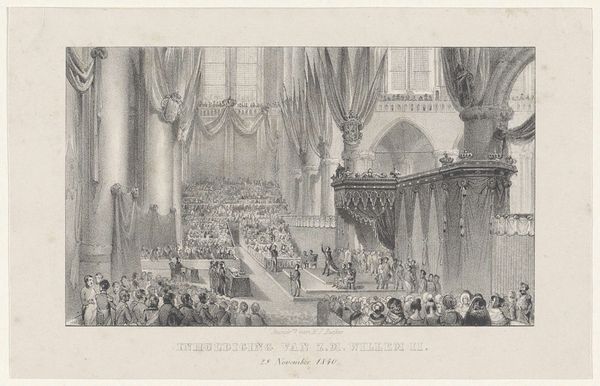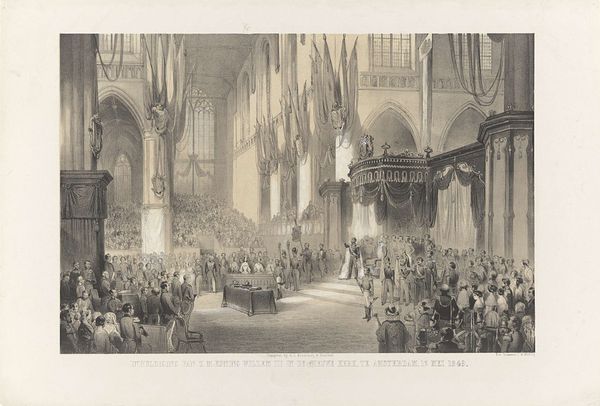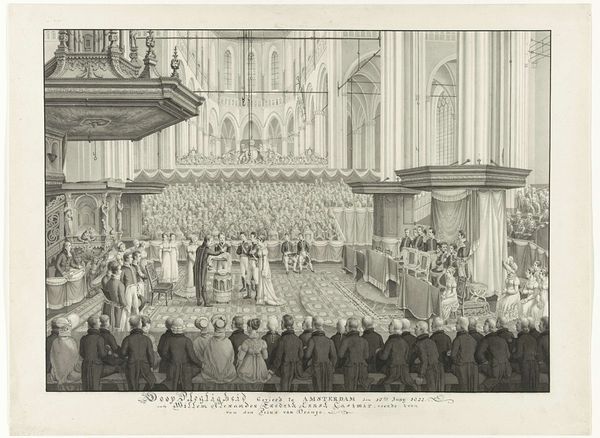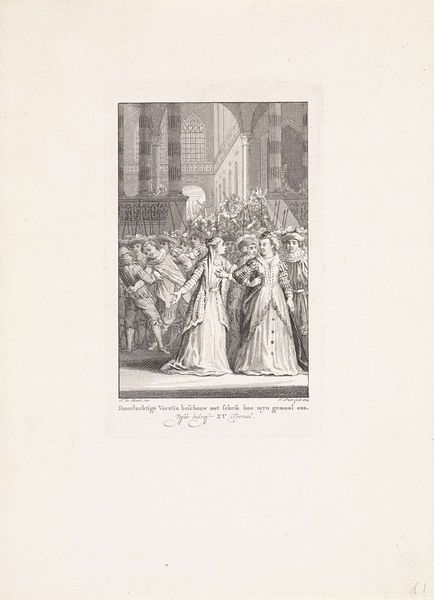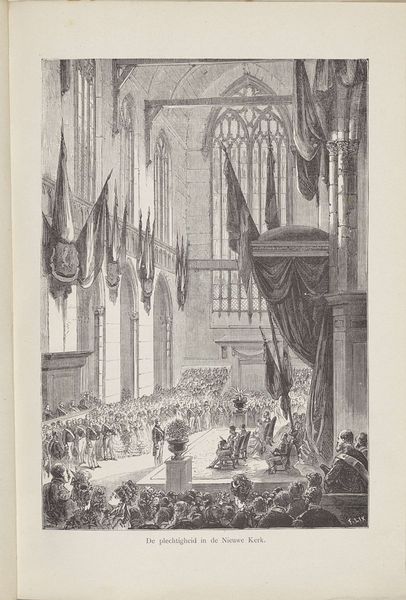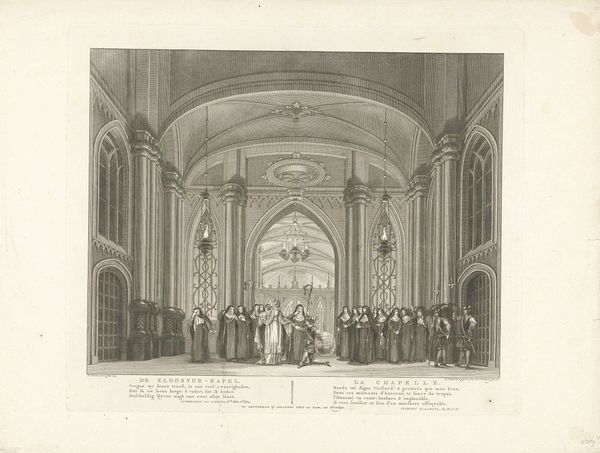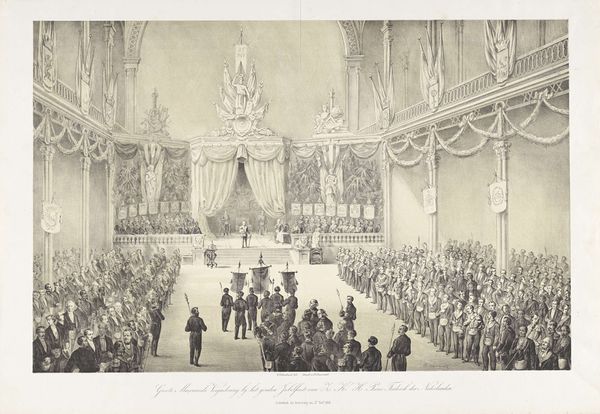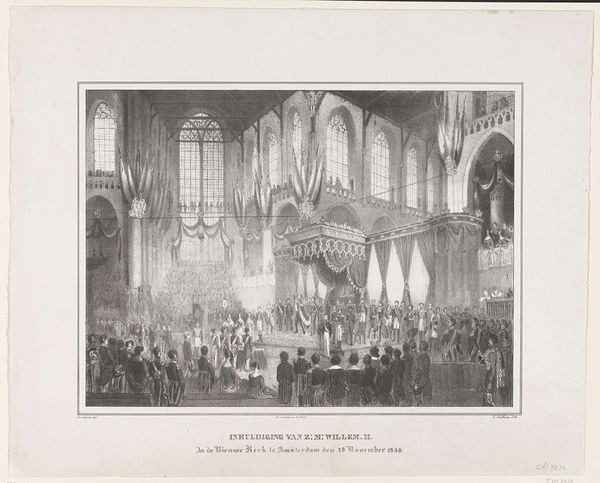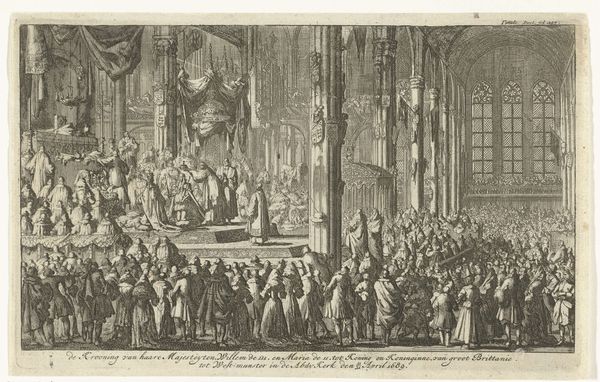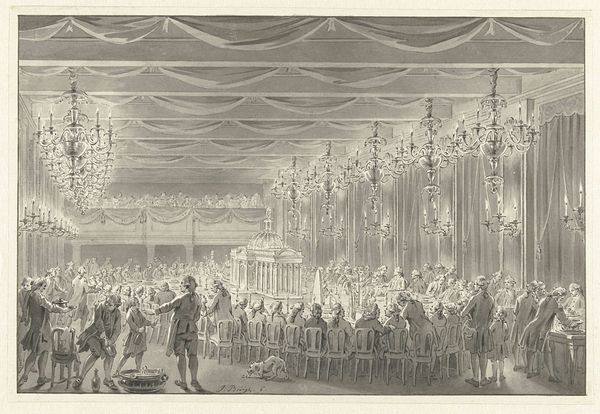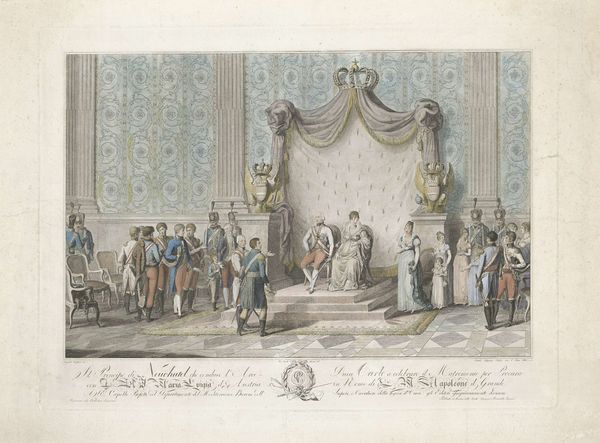
Inhuldiging van Willem Frederik, prins van Oranje als souverein vorst, 1814 1814
0:00
0:00
engraving
#
neoclacissism
#
history-painting
#
engraving
#
realism
Dimensions: height 247 mm, width 306 mm
Copyright: Rijks Museum: Open Domain
Editor: So this engraving, “Inhuldiging van Willem Frederik, prins van Oranje als souverein vorst, 1814" by Reinier Vinkeles depicts a grand inauguration ceremony. It's quite detailed, even intricate for an engraving, but a little stiff, maybe? How do you see it? Curator: I see a fascinating confluence of materiality and social power. The choice of engraving, a medium that allows for mass reproduction, is crucial. Consider the context: 1814, the dawn of a new political era in the Netherlands. By employing engraving, this image, and thus the idea of a sovereign prince, could be disseminated widely. It is an object manufactured for political consumption. Editor: So, it's not just art, it's propaganda? Curator: Precisely. The materials and method were consciously employed to manufacture a specific perception. What impact do you think it might have had on various social classes, considering accessibility and levels of literacy at the time? Editor: Well, engravings are relatively affordable, so it would circulate among the middle class, and maybe even further if displayed in public places. Did the choice of realism contribute to the message? Curator: Indeed. The detailed realism in the engraving creates a sense of authenticity and accuracy. The labor involved in crafting this illusion is also critical, don’t you think? Someone physically etched this image, mass-producing a monarchical idea. How does the print’s availability, its reproducibility, shape the perception of power itself? Editor: I see. It presents the image of the monarchy to many and reinforces the concept with each impression. It almost feels… industrial, like the idea of monarchy is being mass-produced! It seems different from a painting, say. I’d never thought of art in these terms before. Thanks! Curator: Thinking about the intersection of process, materials, and socio-political context can give you very rich new perspectives on an image.
Comments
No comments
Be the first to comment and join the conversation on the ultimate creative platform.
